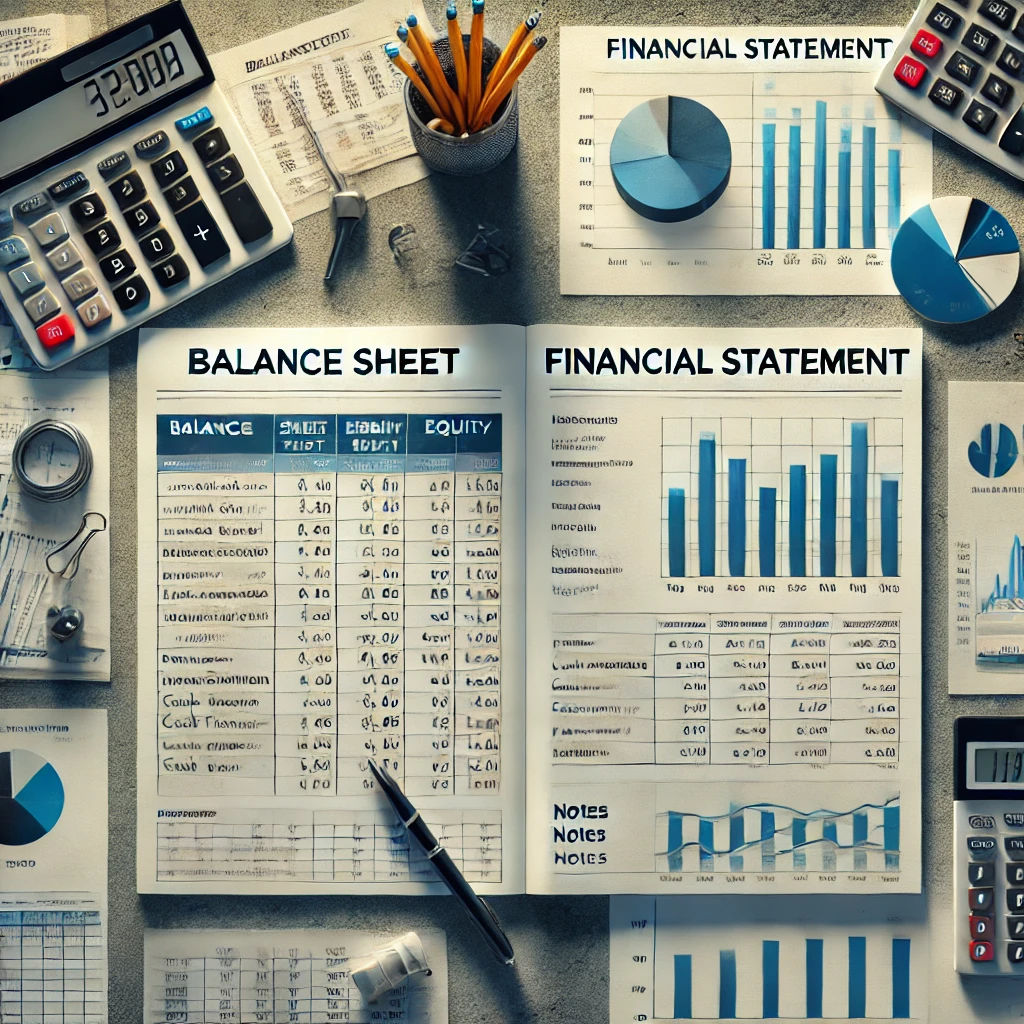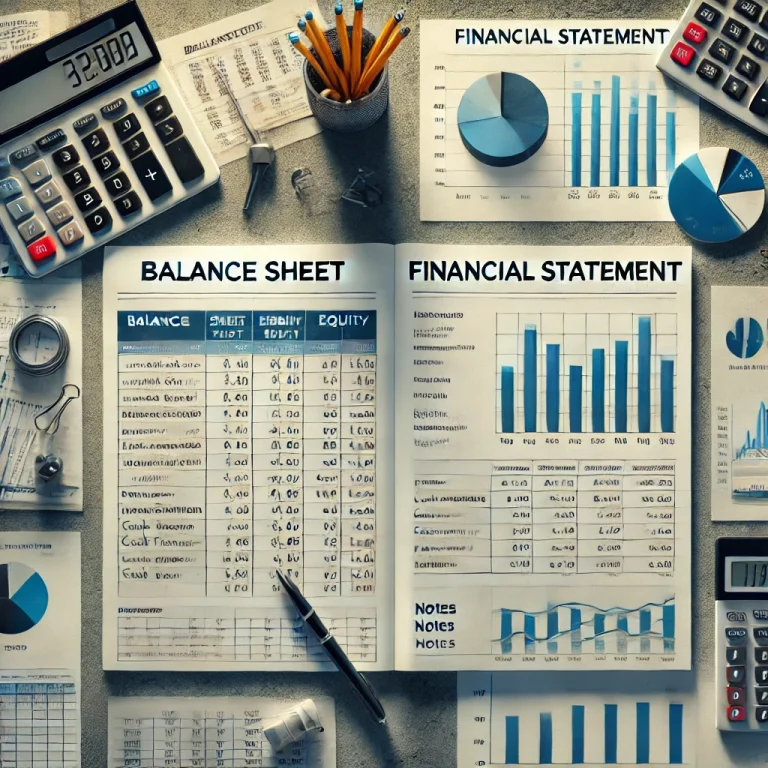A balance sheet and a financial statement are the most important tools in accounting to introduce an overall snapshot of the corporation’s health. While the terms are frequently used interchangeably, they represent two distinct characteristics of financial reporting. A balance sheet is a type of financial statement that represents an organization’s snapshot financial situation at a point in time, articulating its assets, liabilities, and equity. It refers to a set of reports, namely an income statement, balance sheet, statement of cash flows, and statement of changes in equity, presented together to give an overview of the overall financial performance and position of a business over some time.
What is a Balance Sheet?
A balance sheet is one of the financial statements that reflect the financial position of an organization at a given point in time. In alignment with the fundamental accounting equation, it includes an organization’s assets, liabilities, and shareholders’ equity.
Assets = Liabilities + Shareholders’ Equity
The balance sheet is divided into two main sections:
Assets
Resources owned by the company that are expected to provide future economic benefits.
- Current Assets: Cash, accounts receivable, inventory.
- Non-Current Assets: Property, plant, and equipment, intangible assets.
Liabilities and Shareholders’ Equity: Claims against the company’s resources.
- Current Liabilities: Accounts payable, short-term debt.
- Non-Current Liabilities: Long-term debt.
- Shareholders’ Equity: The residual interest in the assets after liabilities are deducted, including retained earnings and share capital.
The balance sheet is a static document, meaning it shows the company’s financial standing only at a specific date, such as the end of a fiscal quarter or year.
Key Characteristics of Balance Sheet
- Reports a company’s financial position at a specific point in time.
- Follows the accounting equation.
- Used primarily to assess liquidity, solvency, and capital structure.

What is a Financial Statement?
A financial statement is a more detailed document that consists of several other reports to provide insight into the financial health of a company over some time. Some of the most major financial statements include:
Income Statement (Profit and Loss Statement): Shows the company’s revenue and expenses over a particular period, resulting in net income or loss.
- Key elements: Revenue, cost of goods sold, gross profit, operating expenses, net profit.
Balance Sheet: As discussed earlier, this provides a snapshot of the company’s financial position at a given moment.
Cash Flow Statement: The cash flow statement represents cash inflows and outflows of a firm during a period and is categorized into three types: operating cash flows, investing cash flows, and financing cash flows.
- Cash is generated by the firm’s ordinary business activity.
- Cash used in or generated from investment-related activities.
- The flow of cash is related to borrowing or repaying debt and issuance of equity.
Statement of Changes in Equity: Summarizes changes in the owners’ equity over a reporting period.
Key Characteristics of Financial Statements
- Presents multiple documents together that provide a balanced view of the state of the health of a company’s finances.
- Analyzes the profitability, cash flow, and overall financial performance.
- Offers information at a point in time and period-based.
Key Differences Between Balance Sheet and Financial Statement
| Aspect | Balance Sheet | Financial Statement |
|---|---|---|
| Definition | A financial statement that shows assets, liabilities, and equity at a specific point. | A set of financial reports that provide a full view of a company’s financial status. |
| Components | Assets, liabilities, and shareholders’ equity. | Includes income statement, balance sheet, cash flow statement, and statement of changes in equity. |
| Purpose | Shows the financial position of a company at a specific time. | Provides a comprehensive view of financial performance over time. |
| Timing | Represents a snapshot at a particular date. | Covers financial performance over a period (quarterly, annually). |
| Key Metric | Total assets, total liabilities, and shareholders’ equity. | Net income, cash flow, and changes in equity. |
| Scope | Focuses solely on financial position (static view). | Covers financial performance and cash flow (dynamic view). |
| Use Case | Assess liquidity and solvency. | Evaluate profitability, performance, and financial health. |
Conclusion
While both balance sheets and financial statements are informative accounts, they are used for different purposes. A balance sheet is a snapshot of a company’s financial position at any given moment in time while showing the total of its assets, liabilities, and equity. On the other hand, financial statements give a fuller and more dynamic view of a firm’s financial performance, other than these reports, for example, the income statement, cash flow statement, and statement of changes in equity. Altogether, these statements give an overview of the financial health and activities of a business to investors, management, and other stakeholders.
Balance Sheet vs Financial Statement FAQs
What is the primary purpose of a balance sheet?
The primary purpose of a balance sheet is to provide a snapshot of a company’s financial position, detailing its assets, liabilities, and shareholders’ equity at a specific point in time.
How is a financial statement different from a balance sheet?
A financial statement is a comprehensive set of reports, including the balance sheet, income statement, cash flow statement, and statement of changes in equity, while the balance sheet focuses solely on the company’s financial position.
Why is a balance sheet important for investors?
The balance sheet helps investors understand the company’s solvency, liquidity, and capital structure, enabling them to make informed decisions about their investments.
What is included in financial statements?
Financial statements typically include the income statement, balance sheet, cash flow statement, and statement of changes in equity, giving a full picture of financial performance.
Can a balance sheet predict future financial performance?
No, the balance sheet only provides a snapshot of the current financial position, but financial statements, especially the income and cash flow statements, can offer insights into potential future performance.

